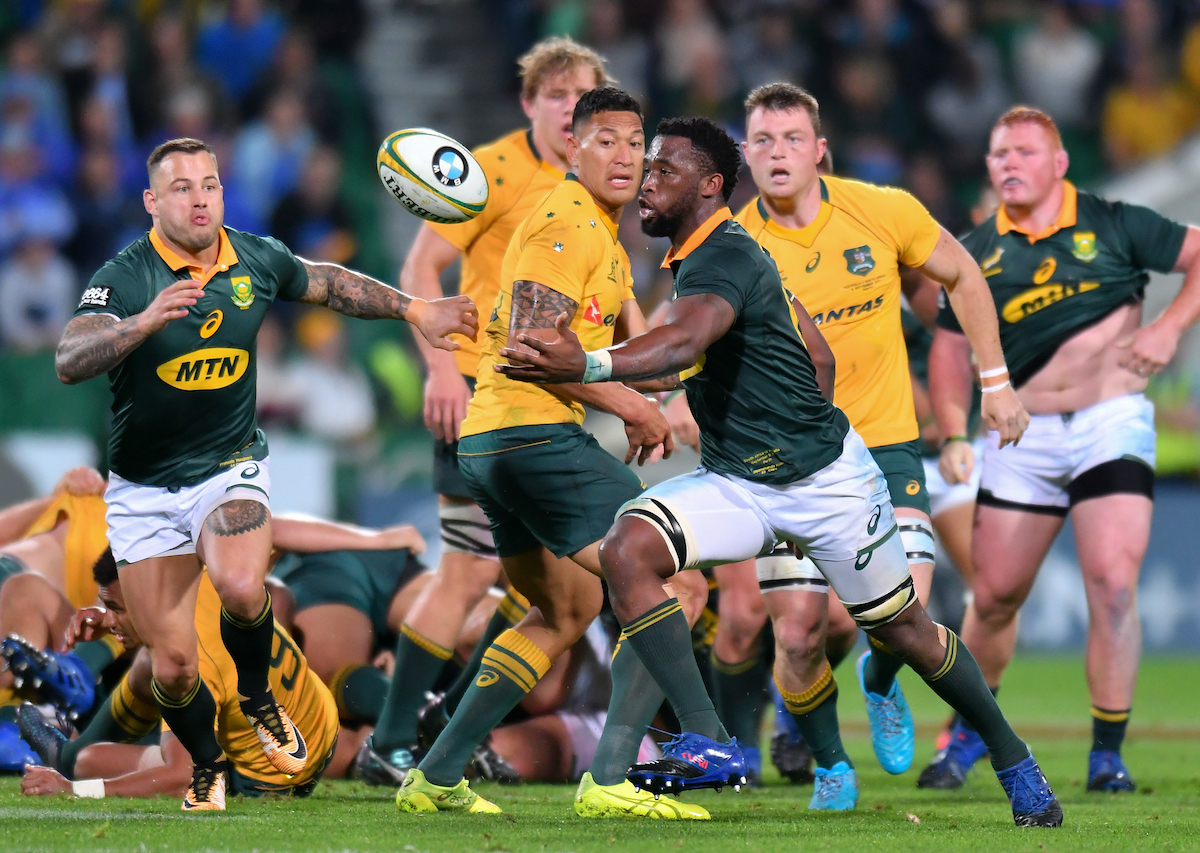
One of Australia’s biggest sports is set to return at the end of May, with the NRL looking at a tentative start date of May the 28th of May.
Image copyright – Steve Haag Sports
Rugby fans around the world are craving the return of oval ball action. And while it looks like they’ll have to wait a few more months for the return of Rugby Union, they may get something of a substitute in the form of Rugby League with the NRL scheduled for a May 28th restart.
League is something of an unfamiliar sport for South Africans, who are better versed in the rules and regulations of Rugby Union. As such, we’ve decided it would be a good idea to run a piece on how Rugby League differed from its Union cousin.
On-field Points Scoring
League scoring system is slightly different to Union’s with four points being awarded for a try and a further two points for a conversion – so a converted try is worth six points while an unconverted try is worth four.
Penalty kicks at goal, while worth three points in Rugby Union, are only worth two points in League.
The final method of scoring in League is via a drop goal. Like penalties, there’s a difference in points value for a drop goal in Union and League with a drop goal in Union worth three points and a drop goal in League being worth only one point.
On-Field Rules
While there are similarities between League and Union, there are also some major differences. Firstly, rolling mauls are non-existent in League, with a tackle being called one an attacking player has been wrapped up by an opponent. Once a tackle is completed a sort of uncontested mini-ruck is formed with the tackled player rolling the ball between his legs to a half-back, while an opposing player remains within a few metres of the tackled player.
As players are not allowed to compete for the ball at the aforementioned mini-rucks, there’s not much chance of forcing a turnover once a player goes to ground. The manner in which turnovers are earned are via unforced errors from the attacking team – knock-ons being the main source – or when a set of six tackles is complete.
The six tackle completion is probably the most important part of the game. The attacking team is given six phases – to score a try. Once these six phases are completed – six tackles completed – the ball is turned over to the defending sides. Most teams will opt to kick the ball once they get to the sixth phase if they are not deep in their opponents half.
Another way to turn over the ball is to strip it in the tackle. This is rather hard to accomplish, however, as League players have huge upper bodies and a rip can only be made in one player versus one player situation.
Another variation between the 40/20 rule which goes as follows: The attacking team must kick the ball into touch behind the opponent’s 20-metre line, but before the goal line (pink area). The ball must also be kicked from behind the attacking team’s own 40-metre line (yellow area).
The ball must bounce within the field of play at least once before finding the touchline, or it’s “out on the full” and a scrum is conceded where the ball was kicked.
A 40/20 kick is rewarded with a scrum to the kicking team at the point where the ball left the field of play.
While there are whole host of other rules, the basics given above should make it easier for those new to League to follow a game.
Remember, that Hollywoodbets offers both live betting and ante-post betting for the NRL.






















